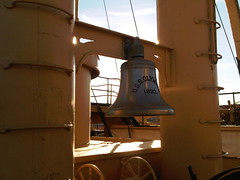
Rivane Neuenschwander's Eu Desejo Seu Desejo ("I Wish Your Wish") at New Museum in August, 2010.
I began my blog Post-Nonprofalyptic in February of 2010. It has been a year of experimentation and growth. I never find enough time to write about everything, even when I limit myself to only the events and exhibitions that I see in person. Looking in retrospect at the year, I am taking the opportunity share a few thoughts about things that I never commented on during the first go around.
Bruce Nauman’s Giorni at Philadelphia Museum of Art truly beguiled me. Days, his English-language version, was distinctly inferior. The raw ingredients of each were essentially the same, but the sounds of the words being spoken held all the power.


Live and Die Like A Lion?, the Drawing Center’s exhibition of Leon Golub’s late career work, was the most marvelous and affecting show that I saw all year. Here was a man in his eighties, already a titan of contemporary painting, stripping back to intense focus on the basics using nothing more than oil stick and paper.


Shepard Fairey’s Mayday at Deitch Projects, the gallerist’s last hurrah before flipping coasts to head MOCA, was the absolute depths of banality. Obey Giant has become part of contemporary iconography; its place as a modern classic is assured. Beyond that, Fairey is not doing or showing us anything new. Even worse, ripped from the environment of the streets, his potency is absolutely neutered.


The Dorothy and Herbert Vogel Collection: Fifty Works for Fifty States at the Pennsylvania Academy of the Fine Arts was the perfect show for the summer in which Bravo birthed Work of Art. My self-loathing was intense for sensing a professional obligation to watch something that felt so cynical towards not only artists, but also their methods, materials, and motivations (even though Abdi, the good guy, was anointed winner). Seeing the collection the Vogels amassed, feeling their passion through the art they acquired on a modest budget, inspired a restoration of faith. These are two people who have lived their lives for the art they love.


I took the guided tour of Big Bambú by Doug and Mike Starn at the Metropolitan Museum of Art. The feeling of standing some forty feet above the roof of the Met on a structure of lashed bamboo? Exhilarating.


I was thrilled about Rivane Neuenschwander’s A Day Like Any Other at New Museum, a rare solo retrospective for a Brazilian artist in an American museum. I took a ribbon and made my wish. Before seeing the show, I did not realize how much popular culture has influenced her art; almost every piece had something to do with song or film. Antropofagia is alive and well.


This air handler by the Dufala Brothers at Haverford College is fresh, exactly as advertised and without a doubt. It feels like the self-assured throwing down of a gauntlet before the feet of other artists.


Underground Philadelphia, one of the multitude of projects for DesignPhiladelphia, actually succeeded in making Dilworth Plaza come alive as a place where people wanted to be, rather than a place where the down-and-out find themselves by default. Meejin Yoon did the same for the banks of the Schuylkill with Light Drift.



If asked which art project or initiative had the greatest impact this year, my nomination would be the Phanatic Around Town series. Were they “real” art or just shameless commercialism? Technically, were they very "good"? Do questions such as these even matter? Nothing connected people with their love for Philadelphia (and the Phillies) like these statues did.


Yarn bombing had its moment in 2010. I noticed it all over the city. It became so ubiquitous that the mainstream press ran stories on it. As part of DesignPhiladelphia, the furniture gallery Minima had a yarn-bomber knit a sleeve for the tree in front of its showroom on 3rd Street. Now that this guerrilla art form has become institutionalized, I find it tiresome. How many more times do we want to see a bike-rack covered by crochet?































